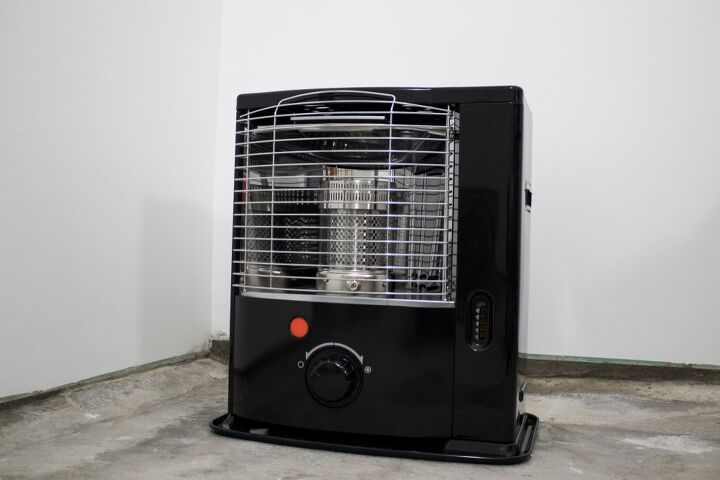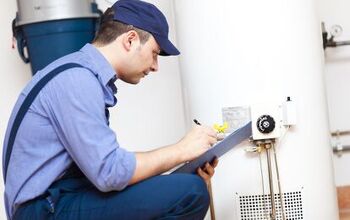Kerosene Vs. Electric Heaters: What Are The Major Differences?

Portable heaters have become essential pieces of equipment both inside and outside the home. Those portable heaters can help make a certain room or area more comfortable immediately. Having access to that comfort on demand is crucial no matter where you live.
These days, people now have numerous options to choose from if they need a portable heater. You can get a more conventional kerosene heater or opt for an electric heater. So, how do those two types of heaters compare to each other?
Kerosene heaters are what you should use outdoors while electric heaters are safer indoors. If you need as much heat as possible, you may want to use kerosene heaters. Do note though that electric heaters are easier to use and they also don’t cause a mess.
You have to evaluate numerous factors carefully when deciding between a portable kerosene heater and a portable electric heater. We’ve detailed those factors in this article so check them out.
Do You Need a Heating and Cooling Contractor?
Get free, zero-commitment quotes from pro contractors near you.

Choosing Between Kerosene and Electric Heaters
The heater is a purchase you need to take seriously. You cannot be satisfied with anything that provides heat. Buy the wrong type of heater and you may find yourself needing to make another purchase sooner rather than later.
Allow us to make the selection process easier. Read through the points of comparison below so you can determine if a kerosene or electric heater suits your needs better.
Location
The most important consideration when you’re buying a heater is your location. Not all heaters are suited to be used in all locations and situations.
For example, unvented kerosene heaters are not even allowed in certain areas. Some states have outright banned the usage of those unvented kerosene heaters. You cannot use them even if you wanted to.
Vented kerosene heaters are different. They aren’t banned anywhere, but your home layout must be capable of accommodating them. You must have an opening available near an exterior wall that can accommodate the heater’s vent. Without that kind of opening present in your home, using a vented kerosene heater is a no-go.
Electric heaters aren’t hounded by as many restrictions. You can use them outdoors if you want as long as it’s not raining. Also consider going with an electric heater if you need to warm up an indoor area. They work really well within that setting.
Using an electric heater should be no problem as long as there’s a suitable outlet nearby. Just clear out the area surrounding the heater and you should be able to use it with no issue.
Safety Concerns
Why does location matter so much when you’re choosing a portable heater? That has a lot to do with safety.
Let’s start with kerosene heaters. Kerosene and other heaters that use fuel can be problematic due to the emissions they produce. They produce a lot of carbon monoxide and other harmful gases.
Put a vented heater in the wrong spot and those hazardous gases could end up accumulating inside your home or RV. Prolonged exposure to those gases could be fatal. Exposure to deadly gases is just one thing you have to worry about when using a kerosene heater. You also have to be careful when refueling it.
Follow the manufacturer’s instructions and let the heater cool down first. Fail to follow those instructions and you could end up damaging both the heater and your home.
You no longer have to worry about hazardous gases when using an electric heater. However, you do have to consider connections and the area around the appliance. Electric heaters typically have to be plugged directly into a wall outlet. If you’re planning to use an extension cord, double-check to see if the manufacturers have signed off on that.
Portable electric heaters can also become fire hazards when they fall over or if the area around them isn’t clear enough. Go with an electric heater armed with a safety switch so it turns off automatically whenever it tips over. Keep flammable materials away from the electric heater as well so they don’t catch fire from prolonged exposure.
Cleanliness
Are you planning to use the portable heater inside your home? In that case, stick to an electric heater if you want to avoid making a mess.
Electric heaters provide the heat you need without producing any waste. They are more suitable for regular use indoors.
Kerosene heaters rate poorly in terms of cleanliness. Using them could lead to fuel spills. Even if you can avoid that, kerosene heaters will still make the area around them dirty.
Heating Capabilities
Simply put, kerosene heaters outdo their electric counterparts in terms of the level of heat they can provide. Kerosene heaters can provide adequate heating for large enclosed spaces. They can also keep you warm at a campsite or some other outdoor location.
Electric heaters cannot match the heat output of kerosene heaters. The electric heaters will suffice for small to medium-sized areas, but you will likely find their output lacking in bigger spaces.
Efficiency
You will have to take on additional expenses if you want to use portable heaters regularly. The value you’re getting from those expenditures will depend on which type of portable heater you’ve opted to use.
Count on your electric bills going up due to your increased usage of an electric heater. Still, you’re getting exactly what you paid for in that scenario.
Kerosene heaters cannot boast that same kind of efficiency. They still struggle to use their fuel efficiently. That can lead to you paying extra for fuel you’re not able to use.
The potential for fuel spills we talked about earlier remains an issue here. If you spill kerosene, that’s money you’re not getting back.
Ease of Use
Before purchasing any type of heater, you should consider how easy it is to use. That is doubly important if you intend to run the heater for extended periods of time.
Kerosene heaters are harder to use. You have to be careful when adding fuel to them and you also need to monitor them closely. Owners also have to take numerous precautions whenever they start using a kerosene heater.
Electric heaters are not as demanding. After plugging them in, the electric heater should be good to go. Set a temperature for your electric heater in order to create the exact type of environment you want inside your home.
Another advantage of using an electric heater is the fact that many of them feature a built-in thermostat. Once the target temperature is hit, the electric heater will power off on its own.
Dependability
The onset of extreme weather can bring with it numerous other issues. If a powerful hurricane damages the infrastructure in your area, you may be left without electricity for a while. That can become a serious problem.
Aside from how dangerous it is to move around in the dark, you also have to worry about your comfort level. The storm may be followed by cold nights. It will be tough to deal with those low temperatures with no heat source available.
Sadly, your electric heater will be no good in that kind of situation. All you can really depend on is a gas-powered heater. In emergency situations, a kerosene heater is definitely preferable to an electric heater.
Cost
You must keep two things in mind if you’re basing your heater purchase on how much it will cost. First, you obviously have to consider the cost of the appliance itself.
On average, electric heaters are more expensive than kerosene heaters. That should come as no surprise given how convenient and feature-loaded electric heaters are compared to the alternatives. The difference in cost is significant as well.
Along with the price of the appliance, you should also account for the cost of running the heater. This could widen the pricing gap even further. Are utility costs higher in your neck of the woods? If so, using an electric heater constantly could cost you a fortune.
Kerosene prices do tend to fluctuate. However, you may still end up saving money long-term if you go with a kerosene heater over an electric heater.
Do You Need a Heating and Cooling Contractor?
Get free, zero-commitment quotes from pro contractors near you.

Related Questions
How Do You Maximize the Heating Capabilities of Your Portable Heater?
To maximize the heating capabilities of your portable heater, you have to start by purchasing an item that’s appropriately sized. That will prevent uneven heating and too much stress being placed on the heater.You should also clear out your intake vents. Clean intake vents promote the better movement of heat throughout your home.Also follow the manufacturer’s instructions when it comes to positioning the heater. The instructions will usually tell you where to put the appliance and how to position it for optimal heating.
How Can You Tell if a Portable Heater Is the Right Size for Your Home?
Before purchasing any portable heater, look at its packaging first. There should be a sizing chart printed on there. The sizing chart may also be found inside the manual.The sizing chart will tell you how much space the heater is designed to warm up. Consult that chart before confirming your purchase.
Related Guide

Gary Evans is passionate about home improvement. He loves finding out how to make improvements in the easiest, most practical, and most affordable ways. Upgrading his home kitchen is one of his ongoing hobbies. Gary is also a long-time content creator and enjoys spending his free time tending to his hydroponic vegetable garden.
More by Gary Evans





















![Cost To Drill A Well [Pricing Per Foot & Cost By State]](https://cdn-fastly.upgradedhome.com/media/2023/07/31/9074980/cost-to-drill-a-well-pricing-per-foot-cost-by-state.jpg?size=350x220)





